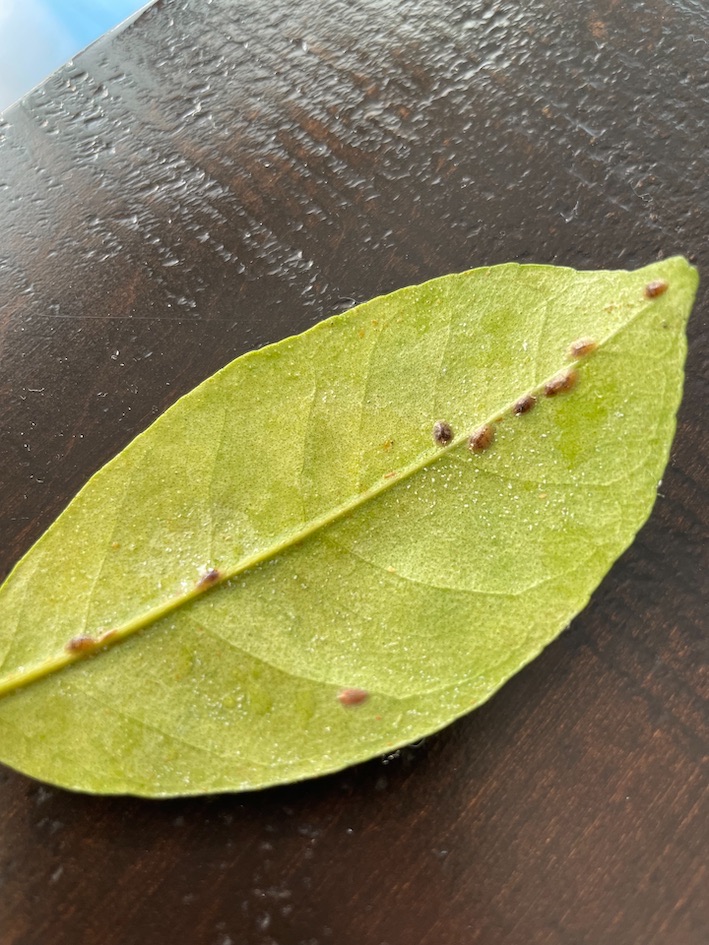
Hi, we have an indoor ornamental orange tree, the leaves of which have developed black dots on the underside. An image is attached. What could be the cause and the treatment? Thank you. Bryan
Dear gardener, thank you for asking this question. Indoor plants can be susceptible to bugs and diseases that do not affect outdoor plants that have a much more complex environment that helps control invasions.
The Calamondin Orange Tree (Citrus x citrofortunella mitis) comes originally from China. This shrub is a very attractive houseplant, and the fruit is edible. It is a cross between a kumquat and a tangerine.
It looks as though your plant may have spider mites. The two-spotted spider mite (Tetranychus urticae) has been identified as thriving on containerized orange trees that are kept indoors in warm temperatures. Clemson Agriculture University in South Carolina has a good factsheet on insects and diseases of citrus plants that you may find interesting. They write about both citrus trees grown outdoors and indoors.
You will need to take a magnifying glass to see if the little brown spots have legs and are moving. Your infestation seems very minimal, and you do not want to introduce pesticides or even spraying oils into your home environment. My suggestion is to make a very dilute solution of washing soap and water, and with a small piece of cotton wool, gently remove each mite and place it in the water. You could also try knocking them off onto a piece of white paper.
I think we can reject the idea that this is a fungal disease, Guignardia Citricarpa, that appears in the form of a black mold that is chalky, gritty to touch on leaves and is responsible for dark spots appearing on the fruits. This mold would make your leaves look much worse. However, this mold can be caused by your plant becoming vulnerable due to insect damage, so it is a good thing that you have identified your insect infestation quickly.
Maintaining your plant’s health is your best resistance to any infestation. With fresh, clean water, wash every individual leaf, since dust is a problem with houseplants and makes them vulnerable to insects and diseases. Maintain a good degree of moisture; if the top of the soil is dry, that is the time to water the plant. Do not overfertilize since that attracts insects.
The Toronto Master Gardeners have an excellent guide on growing houseplants that you may wish to reference.

